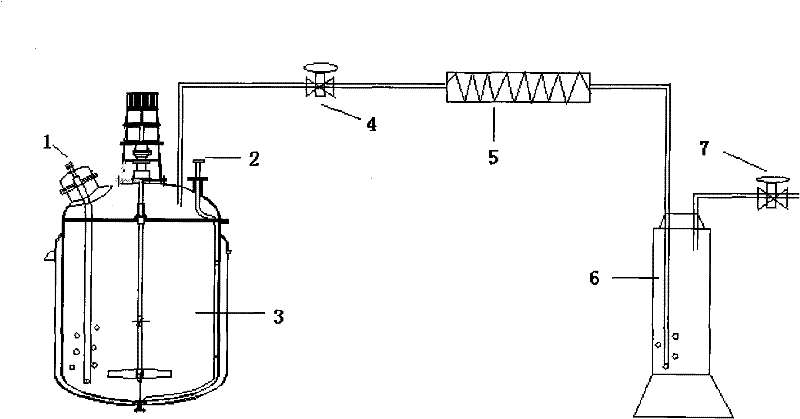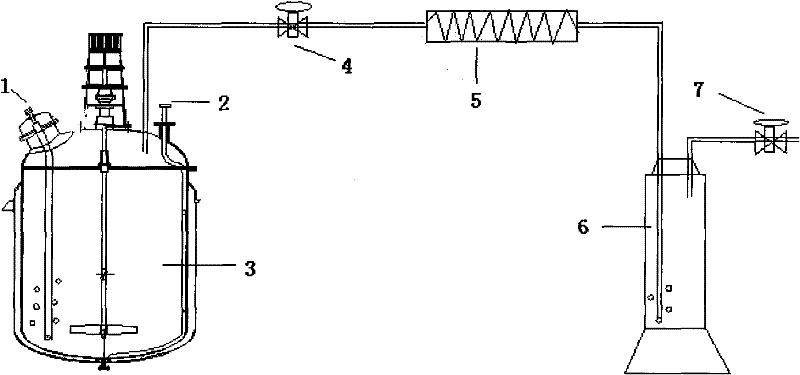Method for synthesizing dichloropropanol by reaction of glycerol and hydrogen chloride
A technology of dichloropropanol and hydrogen chloride, which is applied in the fields of chemical industry and chemistry, can solve the problems of continuous unfavorable reactions, long reaction time, and reduction of catalyst content, and achieve the effects of shortening reaction time, improving selectivity, and avoiding consumption loss
- Summary
- Abstract
- Description
- Claims
- Application Information
AI Technical Summary
Problems solved by technology
Method used
Image
Examples
Embodiment 1
[0023] Add 19.07g (207mmol) of glycerol and 1.184g (16mmol) of propionic acid to the reactor, heat it to 105°C, and feed 3.31mol of gaseous hydrogen chloride at a flow rate of 331mmol / h, the reaction time is 10 hours, sampling analysis, gas spectrogram results It shows that the conversion rate of glycerol is 99.3%, and the yield of dichloropropanol is 81.4%.
Embodiment 2
[0025] Add 19.07g (207mmol) of glycerin and 2.176g (16mmol) of zinc chloride to the reactor, heat it to 105°C, and feed 3.31mol of gaseous hydrogen chloride at a flow rate of 331mmol / h. The reaction time is 10 hours. Sampling test, gas spectrogram results It shows that the conversion rate of glycerol is 90.1%, and the yield of dichloropropanol is 77.8%.
Embodiment 3
[0027] Add 19.07g (207mmol) of glycerol and 1.49g (16mmol) of chloroacetic acid into the reactor, heat it to 105°C, and feed 3.31mol of gaseous hydrogen chloride at a flow rate of 331mmol / h. The reaction time is 10 hours. Sampling test is performed, and the gas spectrogram results show The conversion rate of glycerol was 70.2%, and the yield of dichloropropanol was 78.3%.
PUM
 Login to View More
Login to View More Abstract
Description
Claims
Application Information
 Login to View More
Login to View More - R&D Engineer
- R&D Manager
- IP Professional
- Industry Leading Data Capabilities
- Powerful AI technology
- Patent DNA Extraction
Browse by: Latest US Patents, China's latest patents, Technical Efficacy Thesaurus, Application Domain, Technology Topic, Popular Technical Reports.
© 2024 PatSnap. All rights reserved.Legal|Privacy policy|Modern Slavery Act Transparency Statement|Sitemap|About US| Contact US: help@patsnap.com










